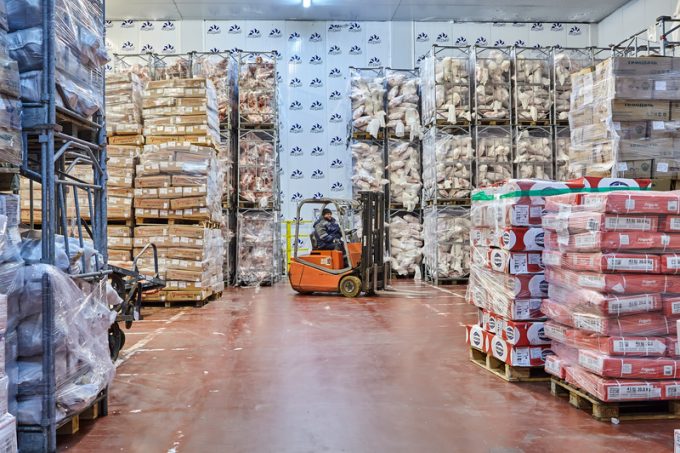Hellmann sets out to extend its footprint in perishables
Hellmann Worldwide Logistics is looking to strengthen its presence in the perishables arena, despite already ...

Yesterday Lineage Logistics broke ground on the expansion of a cold storage facility in Calgary. This will boost capacity by 30%, bringing the facility up to 200,000 sq ft with over 24,000 pallet positions.
The company, one of the leading real-estate investment trusts (REITS) in the temperature-controlled industrial sector, is on a roll this month. On 14 November it opened a 315,000 sq ft facility near the Jacintoport Terminal at the port of Houston. The company’s sixth location in the Greater Houston area offers integrated transport and drayage operations, targeting a broad array of customers.
The same day saw the groundbreaking for a multimodal distribution facility for Vertical Cold Storage (VCS) in Kansas City, which is scheduled to be operational by the end of next year. With a footprint of over 300,000 sq ft and about 50,000 pallet positions, it will feature blast-freezing technology and four rooms that can be set to -20 degrees Fahrenheit. Located adjacent to the intermodal terminal of CPKC Rail, it will offer expedited intermodal service and case picking.
“Most cold storage operators are moving away from value added services like blast freezing and case picking, but our team of life-long cold storage operators embrace these complexities and are looking forward to utilising our best-in-class processes, IT solutions, robotic material handling equipment and AI technology to provide efficient and safe service to our customers,” said VCS president and CEO West Hutchison.
Impressive as these investments may be, they are unlikely to bring much relief to cargo owners looking for temperature-controlled storage space. Although traffic congestion is no longer a problem, the sector faces more or less the same headaches as a year ago characterised by space and equipment shortages and elevated pricing. Demand is widely expected to outstrip supply for the next three years or more.
The biggest driver of this is the rise in online grocery shopping, which is expected to raise its share of US grocery sales overall from 13% in 2021 to 21.5% in 2025. Urban populations are growing and showing an expanding appetite for fresh foods, particularly dual-income households and millennials, who tend to cook less and shop online more, according to a study by Capstone Logistics.
Meanwhile, there is strong demand for frozen food around the planet, now valued at $265bn. According to the American Frozen Food Institute, shoppers are turning to frozen food to reduce waste. In the US frozen food sales have increased by nearly $20bn since 2018 to $72bn.
Increasingly grocery chains offer more complex fulfilment services, which require more space and thus further crimp available capacity.
This growth is in stark contrast with the supply side. New construction has been lagging demand, partly as a result of the high costs associated with cold chain infrastructure. Developers face the choice of building a temperature-controlled facility or spending half as much on a regular warehouse, which are also in short supply.
Industrial real estate giant CBRE noted last year that the elevated costs in the wake of inflation have made it increasingly difficult to achieve yields that justify the investment.
The problem could get a lot worse. A recent study published by Emergen Research found that 78% of existing cold chain facilities are outdated. The majority of temperature-controlled buildings are more than two decades old and equipped with old technology.
Meanwhile, the market has undergone significant consolidation. In its report last year CBRE noted that the share of industry giants Lineage Logistics and Americold rose from 61% in 2019 to 71%, while another 10% was controlled by United States Cold Storage.
Earlier this year Lineage acquired eight temperature-controlled facilities from Burris Logistics. This followed its takeover of three players last year,
Comment on this article